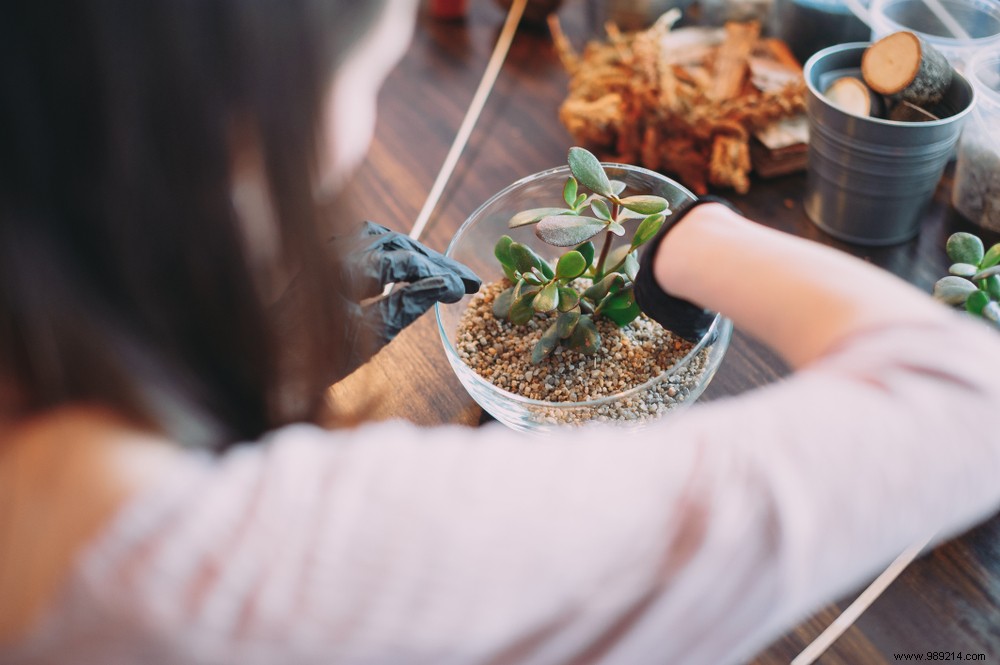
Gardening, you love it! But having the garden or the place to do it is sometimes a little more complicated. Fortunately there is a perfect solution:the terrarium. What are the different types of terrariums and how do you make your own? We give you all the cards to perfectly master this subtle art.
Where did the terrarium come from?
The French love to garden. 9 out of 10 French people[1] even have a small area to cultivate, even if they don't have a garden. The terrarium is a perfect alternative to have plants at home, even without outdoor space.
If today we have access to so many different plants, vegetables, fruits and vegetables, it is thanks to the explorers who set out to discover the world. Indeed, between 70 and 80%[2] of the species we know come from distant lands. Now travel is very fast, but back then a crossing could take months and plants couldn't survive that long away from the ground.
It was the invention of English botanist Nathaniel Bagshaw Ward during the Victorian era that would change everything. It is a wooden box with two large sides with glazed, masticated and mesh panels. Thanks to this composition, the house is completely sealed and traps the plants without renewed air. They can thus travel for a long time without getting damaged. The ancestor of the terrarium was born.
What are the different types of terrariums?
There are two types of terrariums, and it will depend on the environment:
How to make your terrarium?
Material
To create your terrarium, here's what you'll need:
It is also possible to find commercial kits that already contain everything you need. You just have to follow the instructions and make your own very easily.
Important!
Choose compatible plants. As you have seen, you can compose two different types of terrariums:desert or tropical. If you want your terrarium to remain beautiful and last over time, you must choose plants that like the same environment.
D.I.Y:How To
Before choosing the plants for your terrarium, you must decide whether you are composing a desert or tropical one.
Desert Terrarium
Start by using a potting soil for cacti and succulents, suitable for dry environments, then add the substrate. For a desert terrarium, the star plants are succulents and cacti. Basic, they require little watering and are therefore perfect for a terrarium. You can then add decorative elements, such as bark, stones or logs that are particularly suitable.
Tropical terrarium
Line the bottom of your terrarium with the soil of your choice and then place your substrate. Tropical plants can then be planted, such as moss and lichen, which cover the soil and the substrate. You can also use ferns to create volume. Epiphytes and plants with decorative foliage can complete the set, not to mention carnivorous plants. Plants that appreciate humidity and freshness.
In general, choose plants that are small, slow growing and have small roots so that they can thrive in the terrarium environment.
Be well covered for your DIY activities
Very popular, manual activities can however be the cause of injuries. So it is better to guard against it. The Better Being mutual supports you with preventive health actions.
Help:apps to help you
A terrarium has the advantage of requiring very little care, but it can always be useful to have some indications on the maintenance of the plants that compose it. To help you, you can use mobile applications. Plantbook, for example, will tell you when to water them or how to expose them to light. For its part, PlantNet will allow you to identify plants. All you have to do is photograph a plant that you like to have all its information and know if it can join your terrarium.
Very fashionable, the terrarium can be declined to infinity according to our desires. It is an aesthetic and low-maintenance composition, which is why it appeals to both seasoned gardeners and those who do not have a green thumb.
Source:
https://www.jardindion.com/2019/01/12/la-creation-dun-terrarium-dinterieur/
https://www.francetvinfo.fr/economie/emploi/metiers/restauration-hotellerie-sports-loisirs/le-jardinage-une-passion-francaise_2726643.html
https://www.botanix.com/blogue-experts-botanix/creer-propre-terrarium#:~:text=Du%20gravier%20de%20diff%C3%A9rentes%20sizes,in%20fabricating%20a%20in%20paper
https://monjardinmamaison.maison-travaux.fr/mon-jardin-ma-maison/plantes-par-type/plantes-dinterieur/tuto-faire-terrarium-182379.html#item=1
https://www.gerbeaud.com/jardin/fiches/plantes-terrarium,2093.html
https://www.cdeco.fr/choisir-pour-maison/fleurs-et-plantes/histoire-terrariums
[1] JT France 2
[2] Rustica Editions